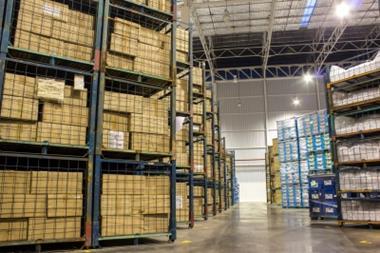Anders Esbjörnsson, group head of risk at NCC AB – the second largest construction company in the Nordic region – identifies the top three risks for the local market and explains why innovation is so slow

According to global information solutions firm Timetric, the Swedish construction market is predicted to expand; for example, the government is investing to improve the country’s infrastructure and to meet the rising demand for new housing. With a plethora of new projects taking place in Sweden and Scandinavia, StrategicRISK asked the group head of risk and managing director for insurance at NCC AB – the second largest construction company in the Nordic region − about the state of the Swedish market.
Q: Growth prospects for the Swedish construction market look positive, with the country projected to achieve 4.80% compound annual growth by 2018. However, what challenges does the local market face?
The construction market is fragmented. None of the main construction companies hold a market share of more than 7%. Some large infrastructure projects are ongoing, mainly in the regions around the larger cities and many large projects have been planned. The housing market is doing fine. The demand for housing in the larger cities is significant, but the number of projects under construction remains modest.
With the largest projects, Scandinavia is experiencing more overseas competition. For example, a Chinese firm has been contracted to build a bridge in Norway and this is possibly a result of numerous large projects taking place in the Nordic region.
Q: Are you managing any of the large projects planned for the Nordic region?
The risk management department becomes involved in all large projects: those exceeding €50m. For example, the construction of a city tunnel under Stockholm (for commuter trains), two large property development in Stockholm and a road near Gothenburg – the second largest city in Sweden and the fifth largest in the Nordic countries.
The risk team also arranges insurance cover for all activities, and this forms the base for our work. Big projects often fall outside our annual policies, meaning we have to be more involved in risk assessment and we do this by conducting various risk surveys. The first of these risk surveys ensures that all liabilities are handled properly. Then, we run a survey scheme together with the different leaders of the project. With large projects, we are generally involved from start to finish.
Q: Do these risk assessments and surveys form part of an ERM framework or is project risk management a more effective method in the construction industry?
This is a difficult question. The NCC strives to broaden the scope of risk management, but construction projects require a ground-up approach and clear guidelines are necessary on how to manage risks for different projects.
The entire company must also have a clear risk management strategy and manage risks across national borders and between business areas.
Q: What are the top three risks facing the construction industry in Scandinavia?
The top three risks are environmental; HR/health and safety; and slow innovation.
In respect of environmental risks, authorities are getting tough and are frequently applying strict enforcement when companies fail to comply with environmental laws.
With regard to HR/health and safety, businesses must consider the welfare of subcontractors. All members of staff – whether in-house or part of a third-party entity – are still getting severely injured and sometimes fatal accidents occur. This is not acceptable.
Last, innovation is slow. The construction industry is too conservative and it needs to find new, sustainable solutions.
Q: What about emerging risks? Some are bound to challenge businesses in the next few years?
IT, which is increasingly used in the planning and designing stages of a project is an emerging risk. The risk lies mainly in human error and whether staff members are following IT security procedures correctly, rather than in the technology itself.
Furthermore, recruiting the best people is a long-term challenge. A large number of construction workers are approaching retirement age and the industry needs to win the fight for the best engineers and technicians in the coming years.
The focus must be to make the construction industry attractive to younger people who have different preferences than older generations.
Q: Are you receiving adequate support from insurers to tackle some of these risks?
In the current soft market, it is relatively easy to find adequate insurance for all activities. However, new risks are emerging. A couple of months ago, I noticed a drone flying above our head office and we found out that the company is using drones (which have camcorders attached to them) to modulate drawings when constructing.
The risks of this technology are mainly related to the environment and liability. For instance, businesses will need to assess the consequences of using such technology in busy and highly populated urban environments and consider the legal implications in the event of an accident.
I hope to see more innovative tools being created for and used by the construction industry, perhaps the use of drones will kick-start a trend for more innovation.




















No comments yet